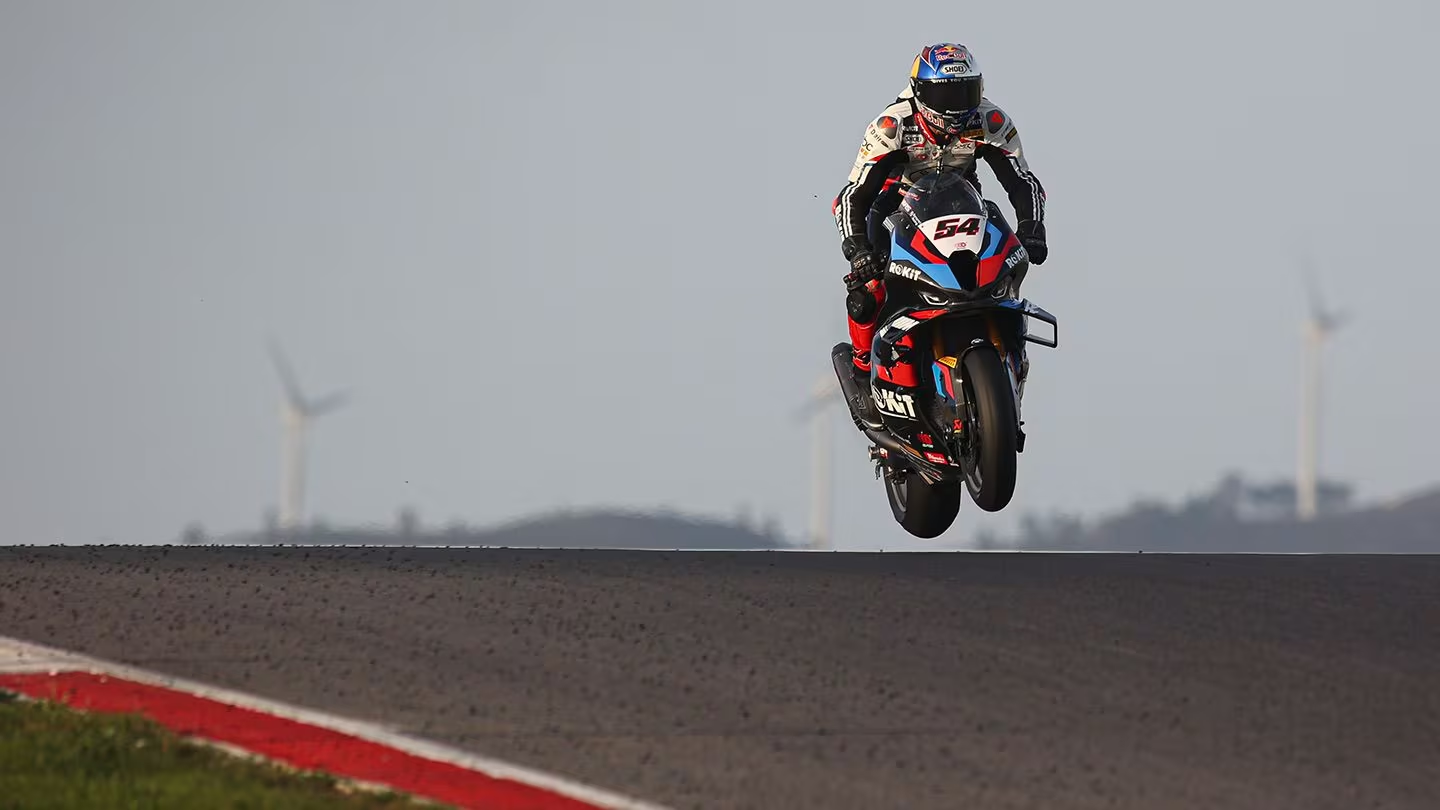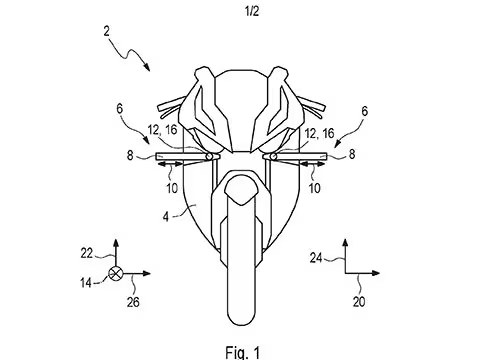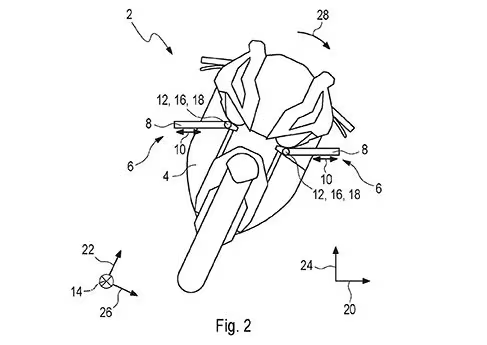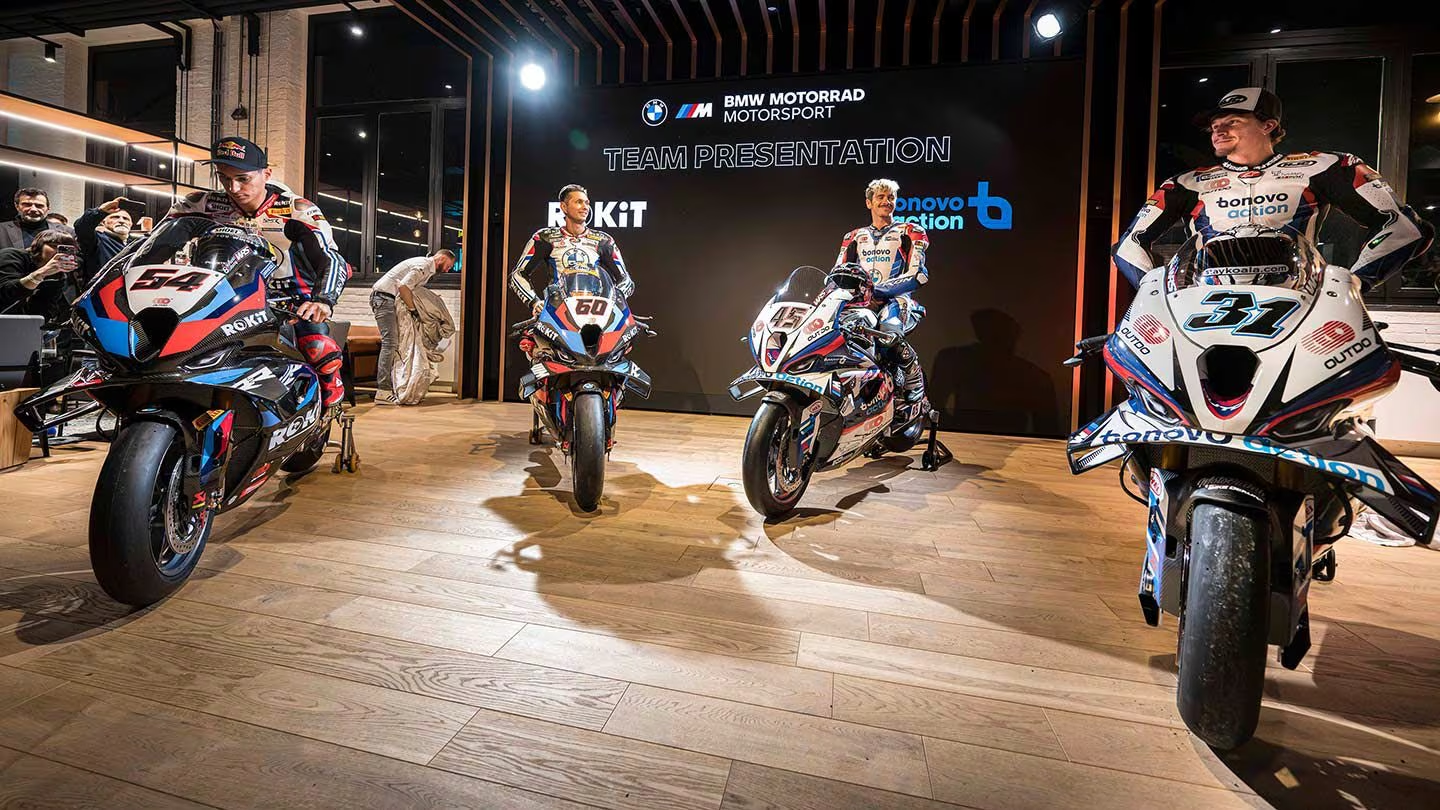
TECH TUESDAY - BMW Patents Active Winglets on S 1000 RR
Moveable wings would be legal in WSBK racing if it's fitted to the production bike. "BMW is fully committed to aerodynamics on its road-going superbikes in an effort to utilize those features in production racing series like World Superbike". BMW
By Ben Purvis Courtesy CycleWorld
We recently saw that BMW has filed a patent for an unusual aero system intended to create downforce in corners, and now the company has applied for another patent that chases the same goal but via a very different manner.
Winglets are already well established as a way to get straight-line downforce on racing motorcycles, helping to reduce wheelies, boost grip on straights, and under braking in the highest level of competition, but the task of getting usable downforce through corners is much harder thanks to the fact that bikes lean over. There are solutions, like the ground-effect bodywork shapes being used by Aprilia and others in MotoGP, but they’re Band-Aids rather than the ideal answer to the problem.
BMW’s latest patent proposes perhaps the simplest solution of all: winglets that remain parallel with the ground, even when the rest of the bike leans over. In MotoGP, where most of this aero work is underway, that would be illegal. The rules clearly state: “Moving aerodynamic devices are prohibited; to this extent, any part of the Aero Body shall be attached so that neither active adjustability is possible (e.g., linkages, bearings, and any design that permits an intentional change in shape/orientation/position are not allowed), nor passive; to this extent any part of the Aero Body, when mounted on the bike in normal operating condition, shall have a maximum deflection of 10mm in any point, when a 50N vertical load is applied in the downward direction with a spherical 20mm radius steel penetrator.”

ROKiT BMW Motorrad WorldSBK Team’s Toprak Razgatlioğlu airs out his factory M 1000 RR at Portimão.Courtesy of WSBK
As a result, there’s been little work done on the idea of active, movable aerodynamics by the teams and manufacturers plowing their R&D money into MotoGP. BMW, however, doesn’t compete in MotoGP, so perhaps has a different outlook. The Bavarian firm’s racing series of choice is the World Superbike Championship, where the rules are very different. The FIM’s WSBK regulations make it clear that active aerodynamics would be legal if a company wanted to use them, on the proviso that the same equipment is fitted as standard to the production model that the racebike is based on.
The WSBK rule book says: “For active or dynamic aerodynamic parts ONLY the standard homologated mechanism may be used. The range of movement must be the same as that used by the homologated road machine in normal use—not the mechanical maximum.”

When upright, the proposed winglets would remain level with the ground.BMW
Right now, it remains a moot point. There aren’t any competitors in WSBK that have active aero components on their road-going motorcycles, so nobody has been in a position to use that part of the rule book. But there have been investigations into the idea. As long ago as 2019 Honda looked at winglets that flipped in or out depending on whether they were needed, but like fixed winglets they would still be most effective on straights rather than in corners. BMW’s latest patent puts the emphasis firmly on cornering, with hinged winglets attached to actuators that keep them horizontal, whatever the bike’s angle of lean.

The big difference with the proposed patent is that when the bike is leaned over through the corner, the winglets would move to remain level with the road surface.BMW
The patent doesn’t go into a lot of detail about the mechanical or electrical systems needed to operate the winglets, instead aiming to get IP protection over the entire concept. However, it’s not hard to imagine that, since the IMUs fitted to virtually all modern superbikes constantly monitor lean angle among other parameters, creating the computer system to keep winglets level would be simple. After all, many of the on-bike camera feeds we get to see on TV already manage to remain upright while the bike beneath them leans over—the same idea could be easily translated to winglets.

Winged warriors. BMW will field four official riders in 2024 in the World Superbike series, including Toprak Razgatlıoğlu (54), Michael van der Mark (60), Bonovo Action BMW’s Scott Redding (45), and teammate Garrett Gerloff (31).BMW
While the existence of this new patent application doesn’t mean we’re definitely going to see active aerodynamics on the next generation of BMW superbikes, it’s a clear indication that the company’s engineers are thinking about it. If it can be done at the right cost, and if the benefits of the system outweigh the inevitable penalty that it will bring in terms of weight and bulk, then it’s a logical step for companies to take. What’s more, if BMW is granted a broad patent on the idea, which is far from a certainty, then rivals—who, remember, can only use active aero if the road bikes also have it—will be hamstrung as they’d have to either come up with systems different enough to avoid the existing patent or license the idea from BMW.
SOURCE: CYCLEWORLD
Disclaimer:
As a service to the sport we all love and follow, Biker Life posts numerous media releases from a wide variety of sources on our website. Due to the large number, and sometimes short time available, it is nearly impossible to review each public release. These articles are written by reporters, writers or press officers who work for various organizations, event organizers, teams, drivers, riders, and other parties, and they do not necessarily reflect the opinions of Biker Life.